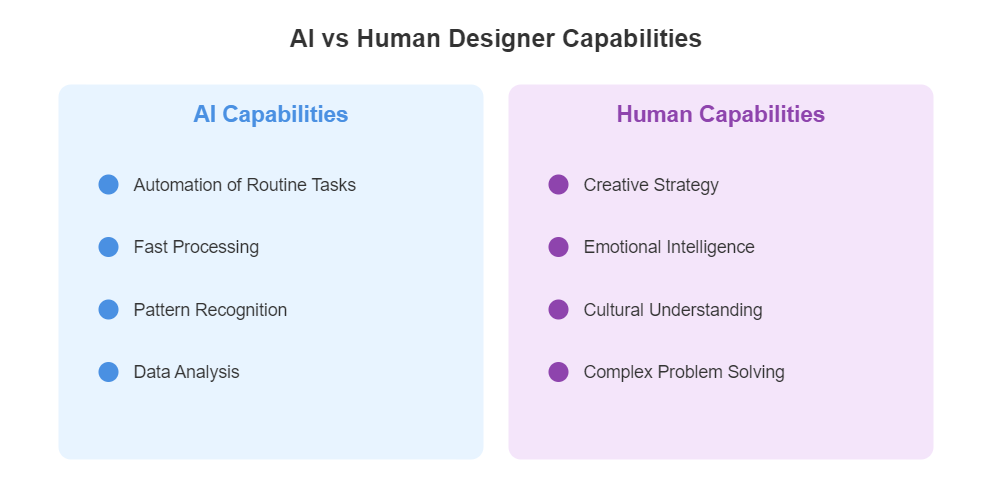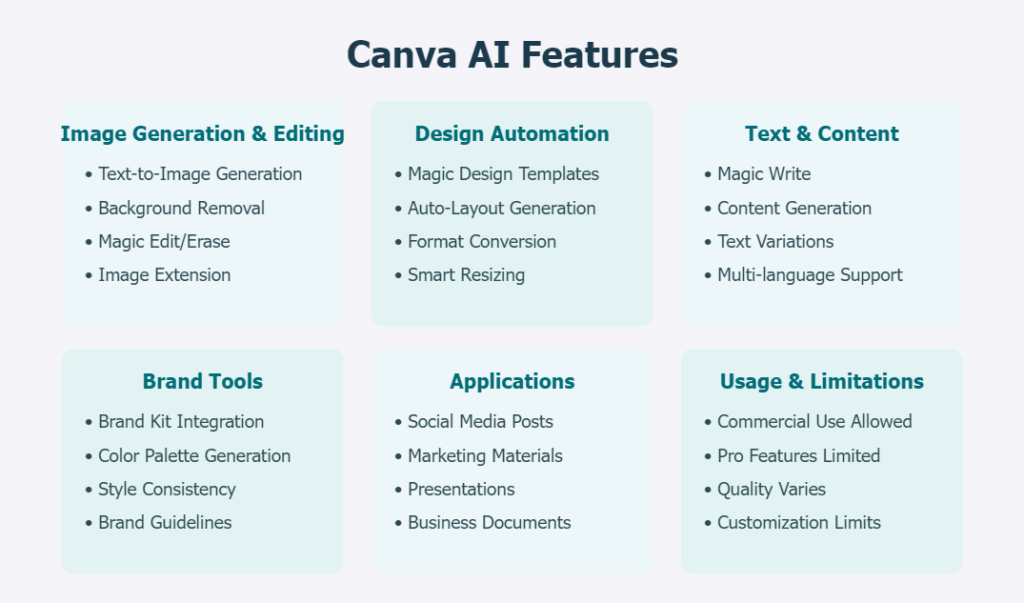Will AI Replace Graphic Designers? Exploring the Future of Design
Table of Contents
As artificial intelligence (AI) continues to advance, many industries are beginning to explore how automation and AI-powered tools can transform workflows and job roles. One of the areas seeing significant change is graphic design. The question of “Will AI replace graphic designers?” has sparked debates across the industry. The answer is NO – AI is unlikely to replace graphic designers entirely. Instead, AI will work alongside designers, enhancing their creative potential and increasing efficiency while still leaving the core aspects of creativity and strategy to human designers. As AI tools evolve, designers must adapt and learn how to integrate these innovations into their workflows, using AI as a powerful assistant.
In this article, we’ll delve into how AI is shaping the future of graphic design, whether it will replace designers, and how professionals in this field can adapt to the growing presence of AI tools.

Will AI Replace Graphic Designers? Key Factors to Consider
The short answer is no – AI will not fully replace graphic designers. While AI is making significant strides in the graphic design industry, several key factors need to be considered. These include the tasks AI can handle, the irreplaceable aspects of human creativity, and the evolving roles of designers.
Rather than replacing designers, AI is enhancing their capabilities. While AI tools can automate repetitive tasks and assist with creative work, they cannot replicate the intuition, emotional intelligence, and cultural understanding that human designers bring to their craft. As AI continues to advance, designers are likely to use AI as a tool, allowing them to focus more on strategic and creative aspects while leaving routine tasks to AI.
How AI is Transforming Graphic Design
AI is already being used in various design tools to automate routine tasks and enhance creativity. From image editing to layout generation, AI tools are improving the design process by making it faster and more efficient.
1. Automating Routine Design Tasks
One of the most significant benefits of AI in graphic design is its ability to automate repetitive and time-consuming tasks. Tasks like image resizing, background removal, and even color corrections can be done much faster with AI tools. For example, AI-powered tools like Canva allow designers to automate image editing, making it easier to focus on more creative aspects of the project.

These AI tools do not replace the designer’s role but instead help them focus on the higher-level creative and strategic tasks that AI currently cannot handle effectively.
2. Enhancing Creativity and Inspiration
AI is not just a tool for automating tasks but also a valuable creative partner. By analyzing vast amounts of data, AI can help designers generate new ideas, explore different visual styles, and create designs that are more aligned with audience preferences.
AI tools like DALL-E 2 and MidJourney can generate visuals based on written prompts, allowing designers to explore concepts they may not have thought of. These tools can provide inspiration, offering fresh perspectives or visual interpretations of ideas, which designers can then refine and adjust.
For instance, AI can help generate:
- Logo Concepts: A tool like DALL-E 2 can produce multiple logo options based on input keywords, enabling designers to explore various design styles and themes.
- Color Palettes: AI can suggest color palettes that complement the project’s goals, streamlining the color selection process and ensuring consistency.
- Typography Suggestions: AI can analyze the design’s context and suggest fonts that align with the brand identity and tone.
By working together with AI, designers can push the boundaries of their creativity and explore new possibilities.
AI and Graphic Design: The Key Factors to Consider
While AI is certainly transforming graphic design, several important factors must be considered when debating if AI could replace designers entirely.
1. Human Creativity Remains Irreplaceable
AI is effective at automating certain tasks and generating designs based on data, but it cannot replace human creativity. Designers bring emotional intelligence, intuition, and a deep understanding of cultural and social contexts—qualities that AI currently lacks. For example, while AI can create visually appealing designs, it often struggles to create designs that emotionally connect with audiences or tell a meaningful story. As Neville Brody has pointed out, the future of design will involve more strategic and narrative-driven work, areas where human designers excel.
2. AI as an Assistant, Not a Replacement
Instead of replacing designers, many experts see AI as a tool that can help them. AI excels in tasks that require precision and speed, but it lacks the depth and nuance that a human designer can provide. While AI can generate design options based on data, it doesn’t understand cultural context or how an audience will react to specific designs. The future will likely see designers working alongside AI, where the tool handles technical, repetitive tasks while designers focus on creativity and strategic thinking.
3. The Changing Role of Designers
With the rise of AI tools, designers will need to adapt their roles. They will no longer rely solely on traditional design skills but will need to incorporate AI into their workflows. This shift will create new roles in the design industry, such as AI-assisted design specialists and design strategists, who are skilled in both creative processes and AI tools.
This shift will lead to the creation of new roles within the design industry—such as AI-assisted design specialists and design strategists—who understand both creative processes and AI tools.
Bonus Tips: How Jobright.ai Can Help You Enhance Your Career
In addition to supporting design tasks, AI tools like Jobright.ai play a key role in the job search process. This AI-driven platform helps job seekers navigate the employment landscape by offering over 8 million job listings, AI-powered resume optimization, and 24/7 support. By matching candidates with roles that align with their skills and preferences, Jobright streamlines the search process, improving the chances of landing the right job in today’s competitive market.
Too busy customizing your resume to ALL of your applications?
Try the Best AI Resume Editor that suits you to every position on Jobright.ai
Find yourself with a new tailored resume that incorporates all the best practices used by professional resume coaches, all in less than 10 seconds.
Try the AI Resume Editor for FREEConclusion
AI is set to transform the graphic design industry, not by replacing designers but by enhancing their creative potential. By automating repetitive tasks and streamlining workflows, AI will free up designers to focus on higher-level creative and strategic tasks. This shift will redefine the role of designers, enabling them to push the boundaries of innovation and design.
The future of design lies in collaboration between human creativity and AI’s efficiency. Designers who adapt and integrate AI into their processes will unlock new possibilities, combining intuition and machine-driven insights. In this dynamic partnership, AI will amplify human ingenuity, empowering designers to create more impactful, innovative, and meaningful designs.

